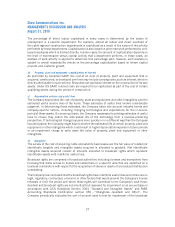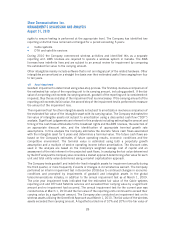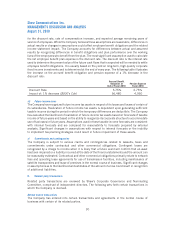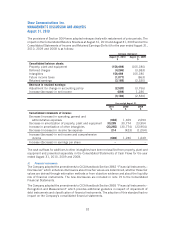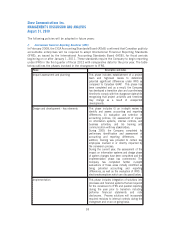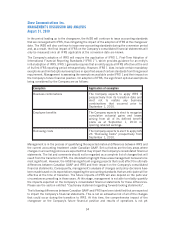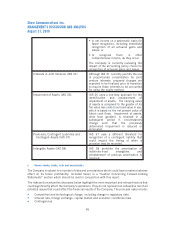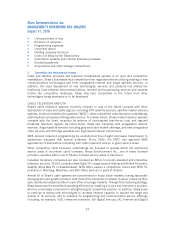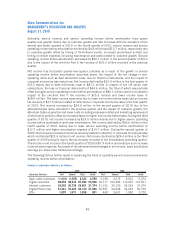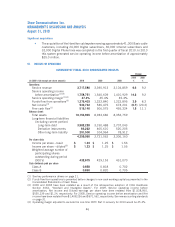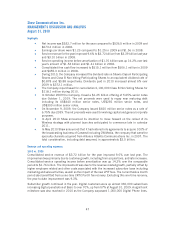Shaw 2010 Annual Report Download - page 41
Download and view the complete annual report
Please find page 41 of the 2010 Shaw annual report below. You can navigate through the pages in the report by either clicking on the pages listed below, or by using the keyword search tool below to find specific information within the annual report.kUninsured risks of loss
kReliance on suppliers
kProgramming expenses
kUnionized labour
kHolding company structure
kControl of Shaw by the Shaw family
kInformation systems and internal business processes
kDividend payments
kAcquisitions and other strategic transactions
i) Competition and technological change
Cable and satellite providers and television broadcasters operate in an open and competitive
marketplace. Shaw’s businesses face competition from regulated entities utilizing existing or new
communications technologies and from unregulated internet and illegal satellite services. In
addition, the rapid deployment of new technologies, services and products has altered the
traditional lines between telecommunications, Internet and broadcasting services and expands
further the competitive landscape. Shaw may face competition in the future from other
technologies being developed or to be developed.
CABLE TELEVISION AND DTH
Shaw’s cable television systems currently compete or may in the future compete with other
distributors of video and audio signals, including DTH satellite services, satellite master antenna
systems, multipoint distribution systems (“MDS”), other competitive cable television undertakings
and telephone companies offering video service. To a lesser extent, Shaw’s cable television systems
compete with the direct reception by antenna of unencrypted over-the-air local and regional
broadcast television signals. As noted above, Shaw also competes with unregulated internet
services, illegal satellite services including grey and black market offerings, and new unregulated
video services and offerings available over high-speed internet connections.
MDS delivers television programming by unobstructed line-of-sight microwave transmission to
subscribers equipped with special antennae. Since 1995, the CRTC has approved MDS
applications of distributors competing with cable television service in given service areas.
Other competitive cable television undertakings are licensed to operate within the authorized
service areas of incumbent cable licensees. Novus Entertainment Inc., one of these licensed
providers, operates within one of Shaw’s licensed service areas in Vancouver.
Canadian telephone companies are also licensed as BDUs to provide standard and interactive
television services. TELUS currently offers Optik TV in large areas of Alberta and British Columbia;
SaskTel offers Max TV in Saskatchewan; MTS offers viewers a competitive choice with MTS TV,
primarily in Winnipeg, Manitoba, and Bell offers services in parts of Ontario.
Almost all of Shaw’s cable systems are concentrated in major urban markets, having favourable
demographics and growth potential, with most of the remainder in smaller clusters, linked via fibre
optic distribution systems either to each other or to larger markets. Through this clustering strategy,
Shaw maximizes the benefits of operating efficiencies, enabling it to be a low-cost service provider,
which is a necessary component in strengthening its competitive position. In addition, Shaw plans
to continue to deploy new technologies to increase channel capacity, to expand the range and
quality of its services, and to enhance its programming and communication service offerings
including, for example, VOD, interactive television, full digital line-ups, HD, Internet and Digital
37
Shaw Communications Inc.
MANAGEMENT’S DISCUSSION AND ANALYSIS
August 31, 2010


